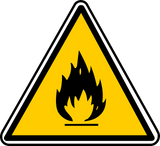5 Signs Your Home Is Too Dry
Think your home is too dry? Dryness is defined by a low relative humidity level. Humidity, of course, is airborne moisture vapor. There's almost always some moisture vapor in the air. As levels of airborne moisture vapor decrease, so will the relative humidity level. A dry home means that the relative humidity level is low -- typically below 40%. What are the signs of a dry home exactly?
#1) Itchy Skin
If your home is exceptionally dry, you may experience itchy skin. Itchy skin is a telltale sign of dry air. Our skin is porous. Like a sponge, it has many small holes that are able to absorb and retain moisture. When exposed to dry air for a prolonged period, your skin will dry out. Skin dryness can manifest in the form of itching, which may indicate that your home is dry.
#2) Nosebleeds
There's a correlation between relative humidity and nosebleeds as well. A dry home may result in more frequent nosebleeds. Maybe you develop nosebleeds when lounging in your living room, or perhaps you develop them while sleeping at night. With dry air, your nasal passages may dry out to the point where they crack and bleed. The end result is more frequent nosebleeds.
#3) Respiratory Allergies
You may experience respiratory allergies if your home is dry. According to the Asthma and Allergy Foundation of America (AAFA), over 50 million Americans suffer from allergies. Respiratory allergies, of course, are characterized by dust, pollen and other airborne allergens. When inhaled, these airborne allergens can trigger symptoms like wheezing, shortness of breath, coughing and more. If the air in your home is dry, you may experience respiratory allergies.
#4) Warped or Cracked Floors
Another sign that your home has dry air is warped or cracked floors. Floors made of real hardwood -- not faux wood or laminate -- are susceptible to damage when exposed to dry air. As they dry out, they may warp or crack. Unfortunately, damage such as this is often expensive and difficult to repair. You can prevent it from happening, though, by maintaining a relative humidity level of at least 50% in your home.
#5) Static Electricity
Dry air can cause a buildup of static electricity. Static electricity typically occurs during the winter season. The air is naturally drier during the winter season as opposed to the other seasons. And if your home is already dry, it can lead to static electricity. Your clothes may "cling" to each other, or you may feel a slight shock when touching doorknobs or other metal objects.
Recent Posts
-
Fire Safety in the Workplace: What You Need to Know
What steps are you taking to prevent fires in your workplace? According to the U.S. Occupational Saf …Aug 23rd 2023 -
Is It Safe to Go Jogging With a Cold Infection?
If you're suffering from a cold infection, you might be wondering whether it's safe to go jogging. T …Aug 22nd 2023 -
5 Safety Tips to Follow When Using a Powder-Actuated Tool
Powder-actuated tools are commonly used to join materials to steel and concrete. Also known as Hilti …Aug 20th 2023




